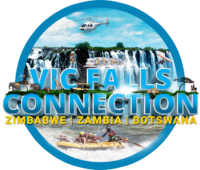
This unique, peanut-shaped country, once known as Northern Rhodesia, offers visitors an authentic African experience complete with adrenalin pumping adventure sports, a variety of fascinating cultural activities, and an abundance of indigenous wildlife, which finds refuge in Zambia’s vast national parks. Spend your evenings enjoying the spectacular site of the world’s largest waterfall, the Victoria Falls, while sipping on sundowners after an exhilarating day of whitewater rafting down the rapids of the mighty Zambezi River. If that sounds a little too adventurous for your taste, take a houseboat cruise along the exquisite Lake Kariba while watching wild elephants drink at the riverbank as you try your hand at catching the elusive tiger fish. However you choose to spend your time in this unique country, you are bound to leave with a heavy heart and a desire to return again soon to this exceptionally beautiful Southern African country.
Additional Information
Currency
Zambia’s unit of currency is the Kwacha (ZMW), formally ZMK which was rebased in 2013. The denominations are K100, K50, K20, K10, K5 and K2. It is subdivided into 100 ngwee. Coins available are K1, 50 ngwee, 10 ngwee and 5 ngwee.
However, some prices are quoted in US$. It is therefore possible to use dollars and pounds as well.
Banking
In the cities and larger towns, you can change cash and travellers cheques at branches of Barclays Bank and Standard Chartered Bank. Larger branches have ATMs that accept Visa. Foreign exchange offices are easy to find in cities and larger towns.
Banks are generally open on weekdays from 08h15 to 15h30 and 08h15 to 12h00 on Saturdays. Banks are closed on Sundays and public holidays.
Climate
The rains in Zambia come mostly in December, January, February and March though the further north you are, the earlier the rains arrive and the later they leave. Eastern areas and higher areas generally receive more rain than western and lowland areas.
By April and May most of the rain has faded away, leaving a landscape that’s still green, but starting to dry out. Nighttime temperatures start to drop, especially in higher and more southerly locations.
In June, July and August the nights become much cooler, but the days are clear and warm. Make sure you bring warm clothes to wrap up if you’re out at night, as some nights get very cold! Most of Zambia’s small ‘walking bush camps’ open at the start of June, when the roads have dried out sufficiently to allow access. This is the start of the ‘peak season’ for these countries – with often cloudless days and continually increasing game sightings.
Into September and October the temperatures climb: the lower-lying rift valleys – Lower Zambezi, Mana Pools and Luangwa Valley – can get very hot in October. However, you’ll see some superb game as the animals concentrate around the limited water sources.
November is variable; it can be hot and dry like October, or it can see the season’s first downpours. Often it’s a very interesting month as you can see both patterns on successive days.
Cuisine
Zambia’s native cuisine is based on nshima, a cooked porridge made from ground maize normally accompanied by some tasty relish, perhaps made of meat and tomatoes, or dried fish. Safari camps will often prepare nshima if requested, and it is almost always available in small, local restaurants.
Camps, hotels and lodges that cater to overseas visitors tend to serve a range of international fare, and the quality of food prepared in the most remote bush camps is typically excellent.
Water in the main towns is usually purified, provided there are no shortages of chlorine, breakdowns, or other mishaps. The locals drink it, and are used to the relatively innocuous bugs that it may harbour. If you are in the country for a long time, then it may be worth acclimatising yourself to it. However, if you are in Zambia for just a few weeks, then try to drink only bottled, boiled, or treated water in town.
Out in the bush, most of the camps and lodges use water from bore-holes. These underground sources vary in quality, but are normally perfectly safe to drink.
Electricity
Electrical sockets in the Republic of Zambia are Type G (BS-1363) and Type C (CEE 7/16 Europlug) and Type D (BS-546). If your appliance’s plug doesn’t match the shape of these sockets, you will need a travel plug adapter in order to plug in. Travel plug adapters simply change the shape of your appliance’s plug to match whatever type of socket you need to plug into. If it’s crucial to be able to plug in no matter what, bring an adapter for all types.
Electrical sockets in the Republic of Zambia supply electricity at 230 volts AC / 50 Hz frequency. If you’re plugging in an appliance that was built for 230 volt electrical input, or an appliance that is compatible with multiple voltages, then an adapter is all you need. If your appliance isn’t compatible with 230 volts, a voltage converter will be necessary.
